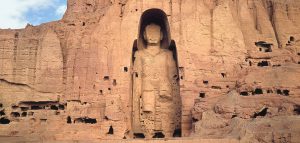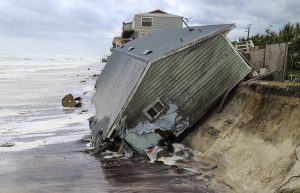Indiana Jones fighting Nazis to rescue precious artifacts for public enjoyment. This is the image that popular culture has manufactured of archaeology. Archaeology is therefore perceived as a benevolent protection of the past, a perception that, while not always untrue, can be problematic. Archaeology, at its best, seeks to deepen and ameliorate the public understanding of past events, creating a more accurate history drawn from as many perspectives as possible. At its worst, however, archaeology can be (and has been) used as a tool to promote extreme nationalism, even to the point of genocide.
In 1933, when the Nazi Party rose to power, funding for archaeological research skyrocketed (Young, 2002), but the Nazis were intentionally misrepresenting the facts of German prehistory. Any and all artifacts of African, Slavic, or South American origin were destroyed or sent away from the eyes of the German people (Young, 2002). The Nazis were altering the past to create an image of a Germany that was descended solely from the Aryan race, with no outside influences whatsoever. They claimed this gave Aryans an inherent right to all the lands they had ever occupied, and superiority over other races (Young, 2002). This manipulation of evidence, coupled with a public lack of understanding of human evolution, led to an apparently convincing narrative of Aryan supremacy (Arnold, 2006). It allowed the white Germans to disassociate themselves from the less worthy others. This was an unfortunately effective tactic, eventually culminating in the internment and death of millions of innocent people.

The entrance to the Auschwitz concentration camp used by the Nazis to separate and murder those they deemed unworthy. Source: https://www.britannica.com/place/Auschwitz
This type of archaeological misrepresentation is still a serious problem in the world today. It is important to remember that disruption of historical knowledge is not always reliant on compliance of the people. The Nazis were able to convince large groups that they deserved supremacy by lying about the past, but today some groups are content simply to destroy it. One modern example of this is the destruction of the Buddhas of Bamiyan in Afghanistan by the Taliban (Sabloff, 2016). The Taliban wanted to erase any evidence of ‘false idols’. By destroying a group’s cultural heritage, The Taliban were able to present themselves as the only option that the people ever had, or ever would have. Physical destruction may not be quite as subtle or effective as the obscuring of data occurring in Nazi Germany, but it is still deletion of cultural history in favor of a violent nationalist agenda.

One of the Buddhas before destruction in 2001 Source: https://www.khanacademy.org/humanities/ap-art-history/west-and-central-asia/a/bamiyan-buddhas
What can be done about such abhorrent destruction of the past? It is difficult to stop these things from occurring, especially at the national or even international level, but the best way to prevent false archaeology is by doing real archaeology. By furthering public knowledge of the past, abusing misinformation becomes more difficult. Furthermore, it is always beneficial to look at archaeological theories with skepticism. Consider how such a narrative might benefit those spreading it. It is not possible to stop people from lying about the past, but it is very possible to recognize, and expose the lies.
Sources
Arnold, Bettina, 2006. ‘Arierdämmerung’: race and archaeology in Nazi Germany. World Archaeology. 38, 8-31.
Sabloff, Jeremy A. Archaeology Matters: Action Archaeology in the Modern World. Routledge, 2016.
Young, Megan, 2002. The Nazis’ Archaeology. Nebraska Anthropologist. 78.
Further Reading


